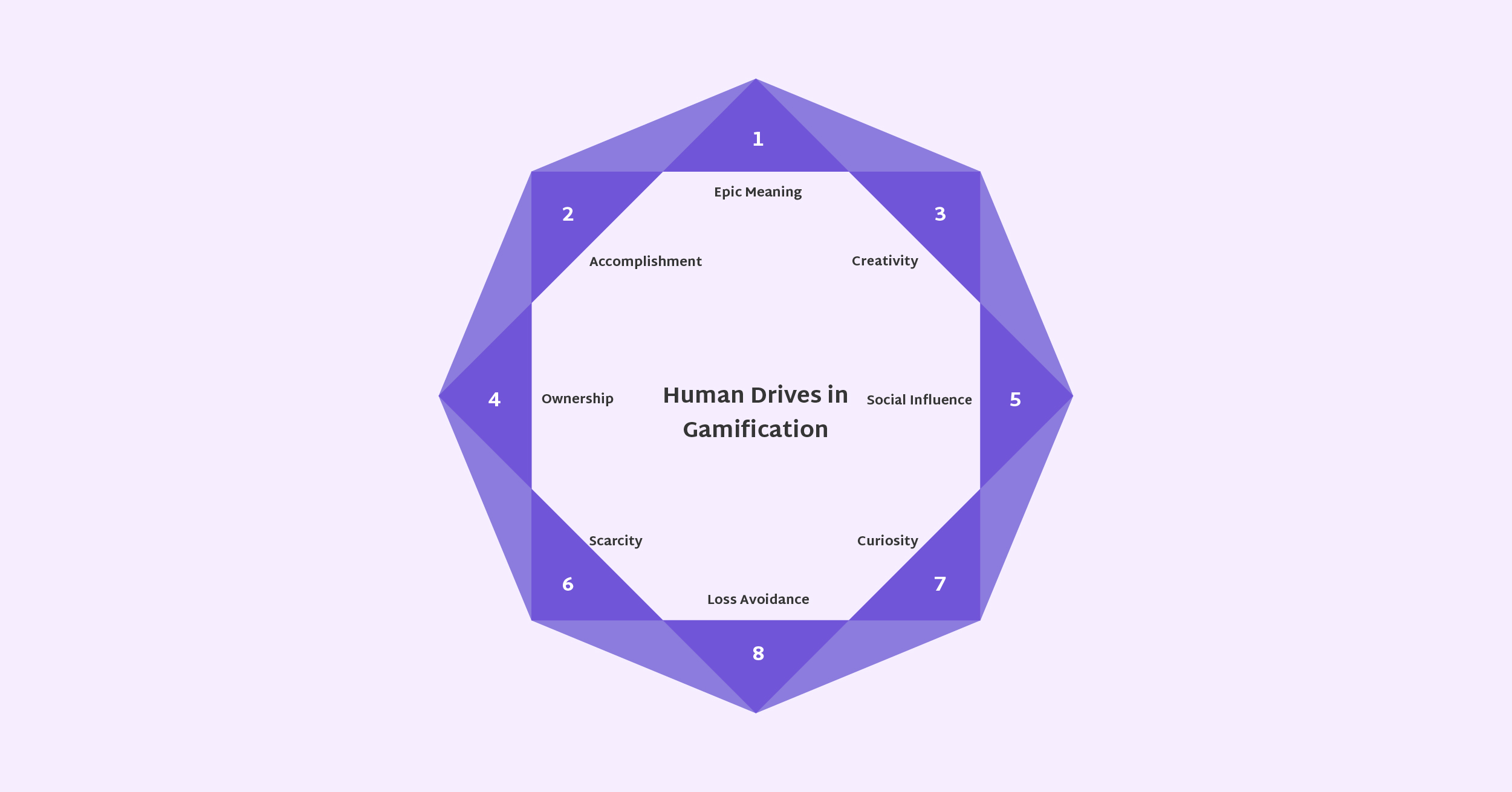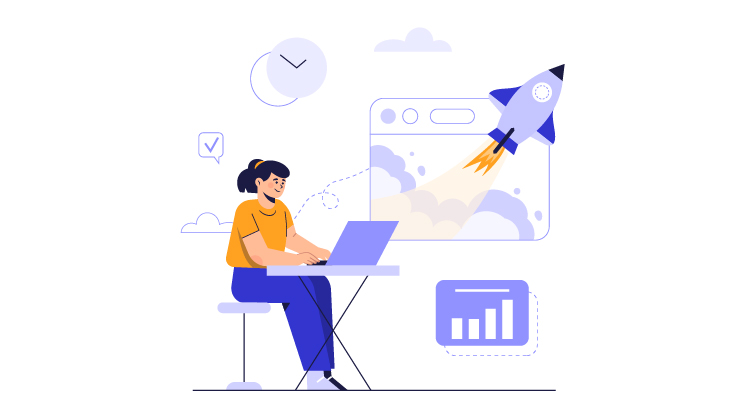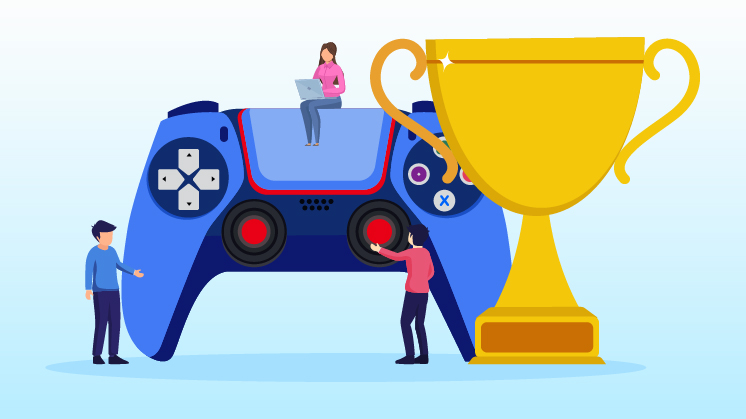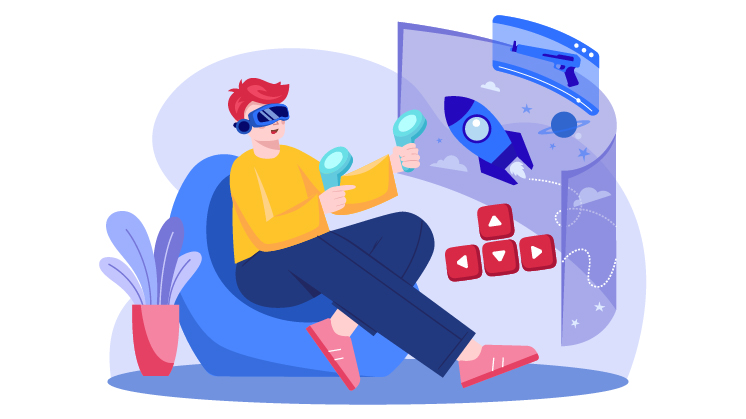Gamification has become a buzzword in marketing. Many companies now incorporate game-like elements into their products and services to engage customers and drive behavior change. But how are game-like elements essential behind human drives in gamification? Also, how can businesses tap into these fundamental motivations to create effective gamification strategies? In this post, we’ll explore the 8 core human drives in gamification that underlie human behavior and how understanding these drives can help you create more effective gamification campaigns.

8 Major Human Drives in Gamification
One of the most fundamental human drives in gamification is the desire for reward and recognition. People are naturally motivated by the prospect of earning rewards, whether they’re tangible or intangible.
Gamification taps into this drive by offering rewards like points, badges, or ranks, encouraging users to achieve their goals.
1. Epic Meaning & Calling
Humans deeply desire to feel like they are part of something bigger than themselves. Gamification can tap into this drive by giving users a sense of purpose and accomplishment.
- Become a Hero: Craft a narrative around your product or service. Let users feel like they are heroes on a quest, overcoming challenges and contributing to the greater good.
- Save the Day: Frame tasks as missions with a clear goal. Defeating a villain (low engagement) or saving a princess (reaching a goal) adds a layer of meaning.
2. Development & Accomplishment
We all have a natural urge to learn, grow, and improve. Gamification can fuel this drive by allowing users to progress and master new skills.
- Level Up: Implement a leveling system where users earn points or badges as they complete tasks. Seeing their progress visually is highly motivating.
- Unlock New Worlds: Reward users with access to new features, content, or challenges as they reach higher levels. This keeps them engaged and striving for more.
3. Empowerment of Creativity & Feedback:
People enjoy feeling in control and having a say in how things unfold. Gamification can empower users by giving them choices and allowing them to express their creativity.
- Open-Ended Play: Offer various paths to achieving goals. Let users experiment and find their own solutions. This fosters a sense of agency.
- Instant Feedback: Provide users with immediate feedback on their actions. This helps them learn and adjust their strategies, keeping them engaged.
4. Ownership & Possession:
Humans are wired to value possessions and strive to accumulate them. Gamification can leverage this drive by offering users virtual goods they can own and manage.
- Virtual Collections: Award users with virtual items, badges, or trophies for completing tasks. Allow them to display their collection and build a sense of pride.
- Customization Power: Let users personalize their experience by customizing avatars, tools, or workspaces. This fosters a sense of ownership and attachment.
5. Social Influence & Relatedness:
We are social creatures who crave connection and competition with others. Gamification uses this drive by creating a sense of community and healthy competition.
- Leaderboards & Rankings: Implement leaderboards where users can see their progress compared to others. A little friendly competition can be highly motivating.
- Teamwork Makes the Dream Work: Allow users to collaborate on tasks or challenges in teams. Working towards a common goal fosters social connection.
6. Scarcity & Impatience:
Limited-time offers and exclusive rewards can trigger our desire for scarce and difficult-to-achieve things. Gamification uses this drive to create a sense of urgency and excitement.
- Flash Sales & Limited Offers: Introduce limited-time discounts or rewards to encourage immediate action. “Don’t miss out!” mentality is powerful.
- Exclusive Content: For a limited time or top performers, unlock special features, content, or challenges. This creates a sense of FOMO (fear of missing out).
7. Unpredictability & Curiosity:
Humans are naturally curious and enjoy the thrill of the unknown. Gamification can leverage this drive by incorporating elements of surprise and chance.
- Mystery Boxes & Random Rewards: Offer users the chance to win random loyalty rewards or unlock surprise elements. The anticipation and excitement can be highly engaging.
- Hidden Challenges: Scatter hidden challenges or Easter eggs throughout your platform. Finding them adds a layer of discovery and keeps users engaged.
8. Loss Aversion & Avoidance:
We naturally dislike losing things we’ve already gained. Gamification can use this drive to encourage users to stay active and maintain progress.
- Streak Tracking: Track user activity streaks and reward them for maintaining them. The fear of losing a long streak can be a powerful motivator.
- The Power of Combining Drives: The true magic of gamification lies in the strategic combination of these core human drives. By understanding your target audience and the desired behavior change, you can design a system that taps into multiple drives simultaneously.
Example of a Human Drive in Gamification
For instance, imagine a language-learning app:
- Epic Meaning & Calling: Frame learning a language as a journey to discover new cultures and connect with people worldwide.
- Development & Accomplishment: Implement a leveling system where users earn points for completing lessons and mastering new vocabulary.
- Empowerment of Creativity & Feedback: Allow users to choose their learning pace and customize their learning paths.
This combination of human drives in gamification can create an engaging learning experience that motivates users to keep coming back for more.
Real-World Instances of Human Drives in Gamification
Gamification is not just for games! Here are some real-world examples of how companies use human drives to achieve their goals:
- Fitness Trackers: These devices tap into the drives for Development & Accomplishment (seeing progress), Social Influence (competing with friends), and Loss Aversion (avoiding losing a streak).
- Loyalty Programs: Airlines or coffee shops reward frequent customers with points, badges, and freebies, triggering Ownership, Development, and Accomplishment drives.
- Educational Courses: Gamified learning platforms incorporate points, badges, and leaderboards to encourage engagement and completion (Development & Accomplishment and Social Influence).
Advanced Gamification Techniques to Know Human Drives
As you explore gamification further, consider these advanced techniques:
- Narrative Design: Craft a compelling story around your product or service to immerse users and enhance the experience. For example, the introduction of a badge system revolutionized e-learning.
- Personalized Challenges: Customize challenges and rewards based on user data and preferences, making the experience more engaging. For example, the introduction of a leaderboard in a corporate environment to achieve sales targets.
- Virtual Economies: Create a virtual currency system where users can earn, spend, and trade items, pushing a sense of investment. For example, introduce digital badges for the highest number of stock trading.
Wrap Up
Understanding the 8 core human drives in gamification can transform your website or marketing campaign into an engaging experience. Remember, the key is identifying the desired behavior, understanding your target audience, and strategically combining these drives to create a winning gamification strategy.



